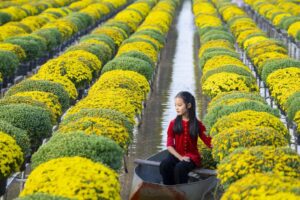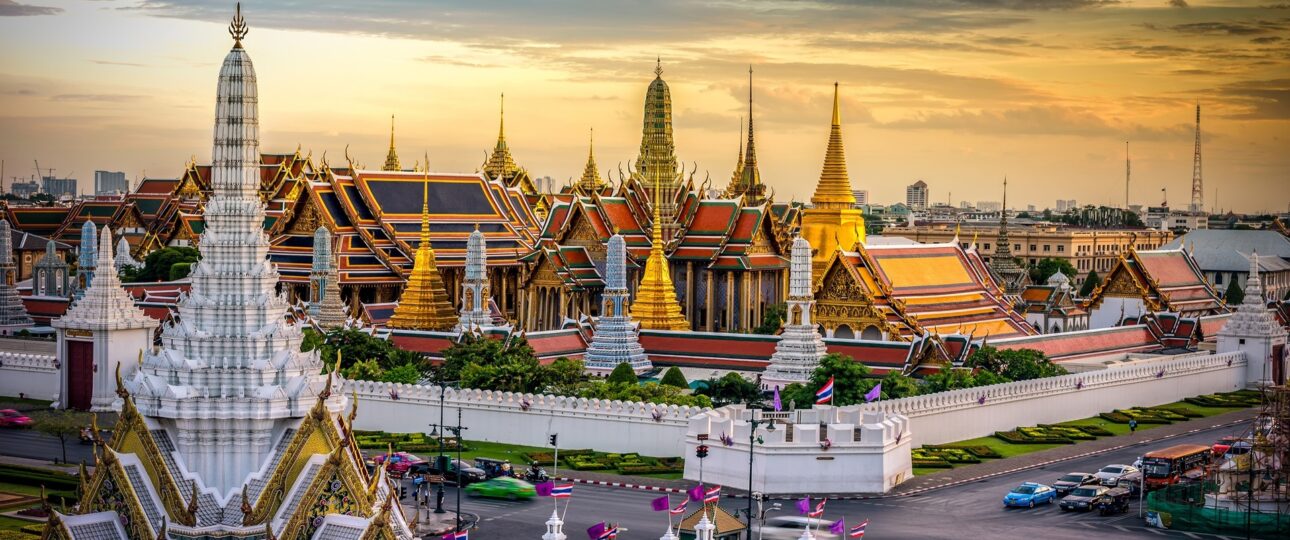1. Overview
Thailand and Vietnam are two Southeast Asian countries that attract millions of tourists each year thanks to their diverse landscapes and rich cultural life. From bustling Bangkok and blue-sea Phuket to Hanoi’s Old Quarter and Ha Long Bay, each season brings a different experience.
To make your trip more convenient, please refer to the article providing information about the best time to visit Thailand and Vietnam below.
2. Weather characteristics of Thailand and Vietnam
Thailand has a tropical monsoon climate with a dry season from November to April of the following year and a rainy season from May to October. The average temperature is 32 – 35°C and the coolest time is at the end of the year, suitable for outdoor activities.
Vietnam spans three regions, so the weather changes dramatically: the North has four seasons, the Central region is sunny but prone to storms at the end of the year, and the South is warm all year round. The dry season from November to April is suitable for exploring most regions; the rainy season from May to October brings cool green landscapes.

Discover Hoan Kiem Lake, the bright pearl of Hanoi, Vietnam – A poetic corner of Hoan Kiem Lake on a late autumn afternoon. (Source: internet)
3. Dry season (November – April): Ideal time for all journeys
This is the best time to visit Thailand and Vietnam, with dry weather, clear skies, and low humidity, which is very favorable for all outdoor activities. In Vietnam, visitors can enjoy the cool air in the North to trek Sapa and explore Hanoi’s Old Quarter, while the South is warm, perfect for a beach vacation in Phu Quoc.
In Thailand, the cool weather and little rain create great conditions for visiting temples in Bangkok and Chiang Mai; it is also the best season for western beaches like Phuket and Krabi, with calm seas and crystal-clear waters.
This season is also the time for many unique festivals: November has the brilliant Loy Krathong and Yi Peng in Chiang Mai, where thousands of lanterns fly into the sky, creating a magical scene, while April is bustling with the bustling Songkran water festival throughout Thailand. Vietnam also celebrates Lunar New Year in January or February, which is an opportunity for visitors to immerse themselves in the traditional cultural atmosphere and enjoy typical cuisine.

Temple of the Emerald Buddha – A Cultural and Spiritual Masterpiece in Thailand. (Source: internet)
4. Rainy season (May – October): Green beauty and reasonable costs
This period is the low tourist season, bringing peaceful, green beauty and reasonable costs for visitors. The rains are usually just short showers in the afternoon, helping the air to be fresher, while the morning and noon are still favorable for sightseeing.
The terraced fields in northern Vietnam turn a deep green or golden yellow during the rice harvest season in September and October, creating a majestic scene. At the same time, visitors can enjoy the beauty of the eastern coast of Thailand, such as Koh Samui, as this area still receives beautiful sunshine during most of this time.
Although the rainy season brings many benefits, it is still not considered the best time to visit Thailand and Vietnam due to the problem of storms. If you intend to visit these two countries during the rainy season, you should regularly update the weather forecast, especially when visiting the coastal areas in central Vietnam (from September to November), where storms may occur.
Always prepare raincoats, non-slip shoes, and necessary items to ensure safety. Arrange your schedule flexibly, with backup indoor activities to ensure your trip is not interrupted.

Terraced fields in Northern Vietnam during the ripe rice season (August and September) weave beautiful golden carpets across the hills and mountains. (Source: internet)
5. Golden Time for Festival Experience
If you are still undecided about the best time to visit Thailand and Vietnam after knowing the weather characteristics of these two countries, you can refer to the time of the festivals to choose a suitable trip for yourself. Surely you will have the opportunity to experience the bustling atmosphere as well as learn about Southeast Asian culture during these major festivals.
5.1. Thailand
Songkran (April): The traditional Thai New Year marks the new year according to the Thai calendar and is famous for the vibrant water splashing activities throughout the country. Visitors can participate in the fun water battles in Bangkok, Chiang Mai, or Pattaya and enjoy the street food of the festival season.
Loy Krathong & Yi Peng (November): The most romantic festival of lights in Thailand, when people release flower lanterns into the river and release sky lanterns to light up the night sky. The best places to experience are Chiang Mai and Sukhothai, where traditional art performances are held.
Phi Ta Khon (June – July): A unique ghost festival in Loei province, with colorful masks and bustling dances. Visitors can join the procession and enjoy folk music and specialties of the Northeast of Thailand.

Thailand’s most unique festivals are Loy Krathong and Yi Peng. (Source: internet)
5.2. Vietnam
Lunar New Year (January – February): The biggest festival in Vietnam, lasting for many days with flower markets, traditional feasts, lion dances, and the custom of picking the first lucky branches of the year. Visitors can experience the Tet atmosphere in Hanoi, Hue, or Ho Chi Minh City.
Mid – Autumn Festival (August of the lunar calendar): Full moon festival with lanterns, lion dances, and moon cakes, especially bustling in Hoi An and Hang Ma Street (Hanoi). Visitors can participate in making lanterns or enjoy traditional cakes.
Hung Temple Festival (March of the lunar calendar): The festival commemorates the Hung Kings – the ancestors of the Vietnamese people – and is held in Phu Tho on a national scale. Visitors can participate in the incense offering ceremony, watch xoan singing, and enjoy traditional dishes of the Northern midlands.

Sa Dec flower village in Dong Thap during Lunar New Year, best for photos in early morning or late afternoon – a century-old flower village of Vietnam. (Source: internet)
6. Suggested the best time to visit Thailand and Vietnam according to interests
Love the sea and sunshine: Visitors can choose Southern Vietnam (Phu Quoc, Nha Trang, Mui Ne) or Phuket and Krabi from December to April when the weather is dry and sunny and the sea is calm. With Koh Samui, the best weather is from January to August, suitable for diving, kayaking, and relaxing at a coastal resort.
Love shopping: Thailand has a big sale season from June to August, especially in Bangkok, Chiang Mai, and Pattaya, with many products from fashion and cosmetics to electronics discounted up to 70%. Visitors can hunt for branded goods at major shopping malls such as Siam Paragon, Central World, and ICONSIAM or buy handicrafts at Chatuchak Market.
Passionate about terraced rice field photography: Northern Vietnam (Mu Cang Chai, Sa Pa, Hoang Su Phi) in September – October is the time when the rice fields are golden ripe. This is an opportunity to take spectacular photos and combine trekking through villages and interacting with ethnic minorities.
Love festivals: Songkran in Thailand (April) brings a vibrant water – splashing experience throughout the streets, while Tet in Vietnam (January – February) is an occasion to visit flower markets, enjoy traditional food, and participate in New Year’s Eve rituals. Both are great opportunities to immerse yourself in local culture and capture brilliant moments.
Avoid the crowds: The rainy season from May to October in both countries has fewer visitors, this is the best time to visit Thailand and Vietnam for those who want to enjoy quiet spaces and affordable services. The rains are usually short and concentrated in the afternoon, leaving clear mornings suitable for sightseeing.
7. Conclusion
In short, choosing the best time to visit Thailand and Vietnam depends on your preferences. Regardless of the time, these two countries always welcome you with rich and memorable experiences. To make your journey more complete, join Asia Luxury Travel—a reliable companion that offers quality tours and dedicated services.
8. Contact :
Phone: +84 965 721 426
Email: sales@asialuxurytravels.com
Website: https://asialuxurytravels.com/
Address: No. 9, Alley 31/7, Phan Dinh Giot Street, Thanh Xuan, Hanoi



